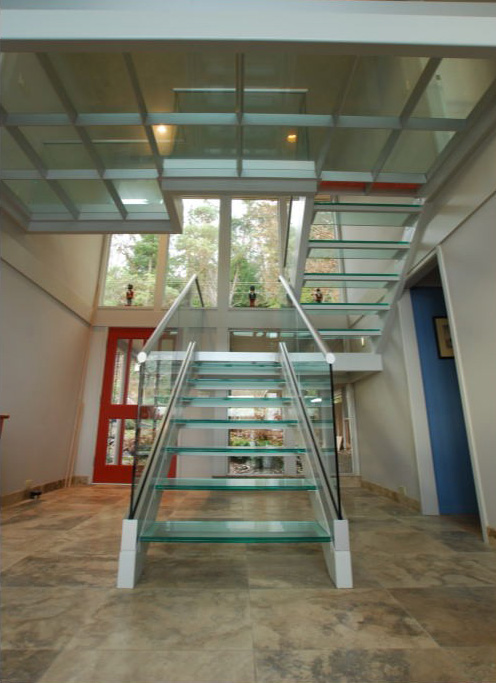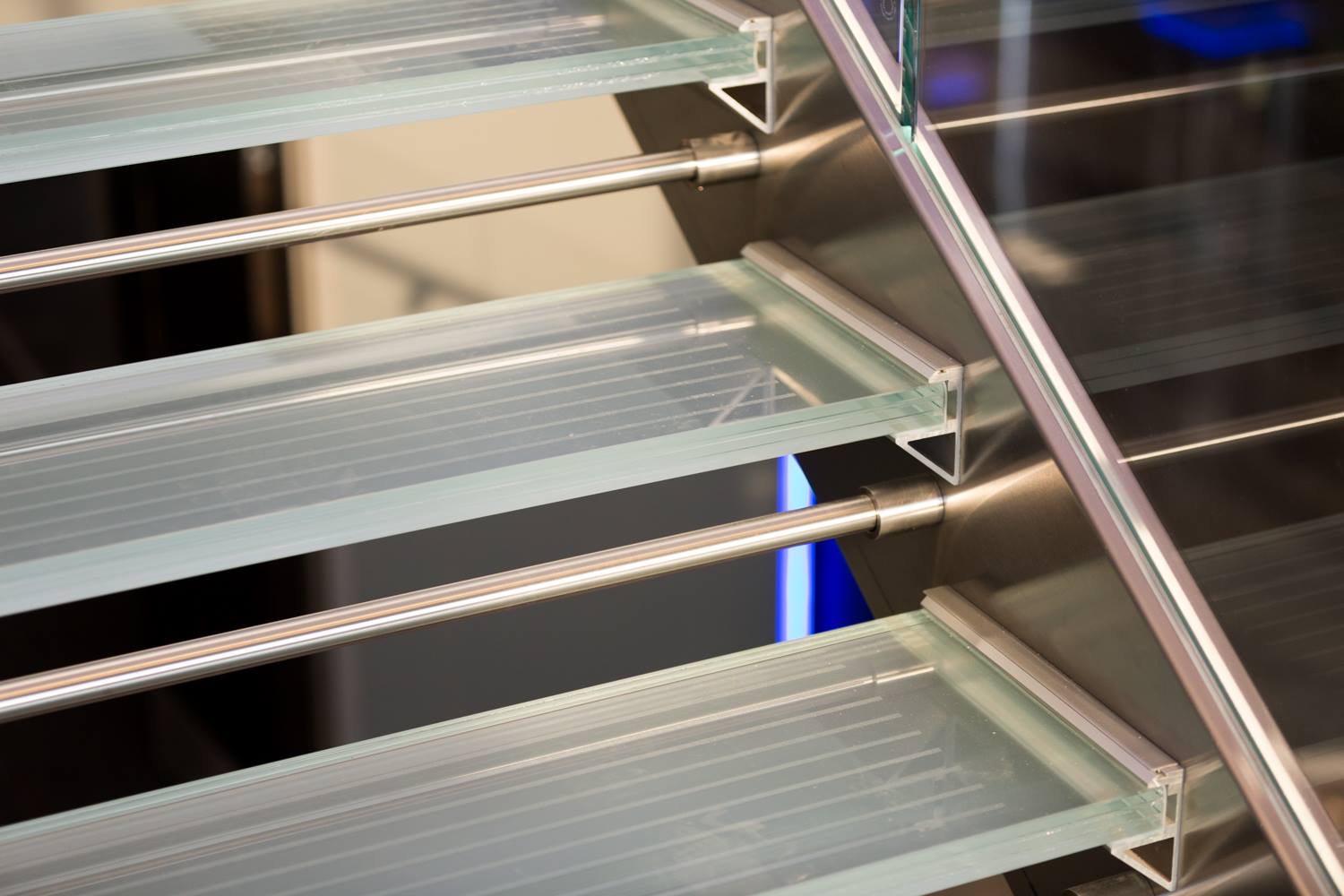Make a Statement With Floating Stair Treads
Floating Stair Treads
A floating glass staircase is more than a feature in a space. It can be a focal point and a design show-stopper. Clear glass treads can appear to be suspended, untethered to a structure, producing a contemporary, elegant, and ethereal effect.
Floating glass staircases are created by setting the glass treads into specially designed support brackets. Once installed, the brackets seem to vanish and will not obstruct the stairs, creating the effect of floating stair treads or a floating glass staircase.
Make a Commercial Statement With a Floating Glass Staircase

Floating glass staircases have a number of advantages in commercial buildings, including:
- Aesthetics: Floating glass staircases add a stylish touch and even drama to any contemporary commercial building, from office buildings to retail and hospitality. They also create a sense of openness and space clients and visitors respond to.
- Connectedness: In environments like retail stores, a glass staircase can give customers a glimpse of the store’s offerings on the floors above and below them, drawing them throughout the store and leading to more sales.
- Durability: Despite their ethereal looks, floating glass staircases are made from thick, tempered glass for strength and durability. When specified for commercial environments, floating stair treads are made to withstand heavy foot traffic, and are resistant to chipping, scratching, and breaking.
- Ease of maintenance: Floating glass treads are easy to clean and maintain. A damp mop will remove dust and dirt.
- Safety: Floating glass staircases are as safe as traditional staircases. They must meet the same building codes and safety standards as any other type of stair materials.
- Property value: High-end finishes in a commercial property — for example, a floating glass staircase in a hotel lobby that leads to the mezzanine-level restaurant — increase a property’s value, whether residential or commercial.
Floating glass staircases also serve practical design functions. Use them to divide spaces without blocking sightlines, or, create an unmistakable focal point. Glass staircases can also improve traffic flow and subliminally create an inviting atmosphere, as nothing remains “hidden.”
How Are Floating Glass Staircases Engineered?
The gravity-defying experience of walking on glass can be a thrilling one and often begs the question: “Is it safe?”
The answer is a definitive yes. Standards for glass stairs may include:
- Thickness: Glass stair treads must be at least 1.5 inches (38mm) thick. This helps to ensure they can withstand the stress of people walking on them.
- Type of glass: Glass stair treads must be made from tempered glass. Tempered glass is much stronger than regular glass and is less likely to break.
- Lamination: Sometimes, glass stair parts are laminated. This means that they are made from two or more layers of glass that are bonded together by a layer of plastic. Lamination makes the glass even stronger and more durable.
- Slip resistance: Glass stair treads can have extra slip-resisting features such as acid etching, sandblasting, or applying a traction control coating.
- Edgework: Glass stair treads must have polished or beveled edges to prevent cuts and scrapes.
In addition to these parameters, glass stair treads must also meet all applicable local building codes.
Here are some additional parameters that glass stair treads may need to meet depending on the specific application:
- Load-bearing capacity: The load-bearing capacity of the glass stair treads must be sufficient to support the expected weight load. This is especially important for commercial applications where there may be a lot of foot traffic.
- Impact resistance: The impact resistance of the glass stair treads must be sufficient to withstand accidental impacts. This is important for both residential and commercial applications.
Always choose a qualified, experienced supplier and installer to ensure the products chosen meet all of the necessary parameters and that installation is performed correctly.
The GBA Glass Stair Tread Advantage
GBA Architectural Products + Services not only creates the off-the-shelf custom products to create a stunning floating glass staircase for your commercial or residential clients — we also install everything we make, giving architects, designers, and contractors peace of mind.

GBA also offers options that allow you to give your client a one-of-a-kind floating glass staircase, including:
- Standard glass (greenish/blue hue) or low-Iron glass for a crystal-clear look
- Fully transparent, fully translucent or anything in between
- Slip resistant options:
- Traction control ceramic frits or sandblasting offer excellent anti-slip qualities in both wet and dry conditions
- Clear or colored interlayers are available
- Digital printing or silk screening can be applied to your glass to provide a unique feature to your project.
No matter what type of commercial or residential building you have, a floating glass staircase will add client-pleasing style and sophistication — and that “wow” factor every project needs.
